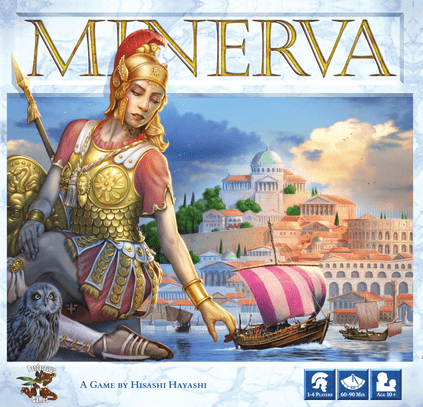Minerva (2015) Board Game
Minerva is a board game released in 2015, designed by Hisashi Hayashi and published by Japon Brand. The game falls under the categories of City Building and Economic, where players take on the role of city planners in ancient Rome, striving to develop their cities by acquiring resources and completing contracts.
Game Components of Minerva
How To Setup Minerva
To set up Minerva, each player receives a fountain tile, a wheat resource, and coins based on their seating order. The tile stack is prepared, and the start tiles are placed in the market. Additional tiles are added to the market until a round tile is revealed. The temple tiles are shuffled, and five are laid out. A turn order tile is placed near the play area for each player.
Gameplay Mechanics and Game Objective
Player Experience
In Minerva, players are engaged in a strategic battle to optimize their city’s development. The game lacks direct player conflict but features significant indirect interaction, such as competing for resources, cultural objects, and temple tiles. Players must balance building long lines to maximize residence efficiency against creating a compact city for greater opportunities. The spatial decisions in the game are critical and impactful, making it appealing to fans of tile-laying games.
Pros
Cons
Personal Thoughts on Minerva
Minerva is a great choice for fans of quick, strategic games, especially those who enjoy tile-laying and engine-building mechanics. It’s an excellent option for a two-player lunch game due to its relatively short playtime and engaging gameplay. While it may not be as polished as some other games in its category, Minerva delivers a satisfying experience with its unique spatial activation mechanic and balanced scoring system.
We are supported by our audience. When you purchase through links on our site, we may earn an affiliate commission, at no extra cost for you. Learn more.

